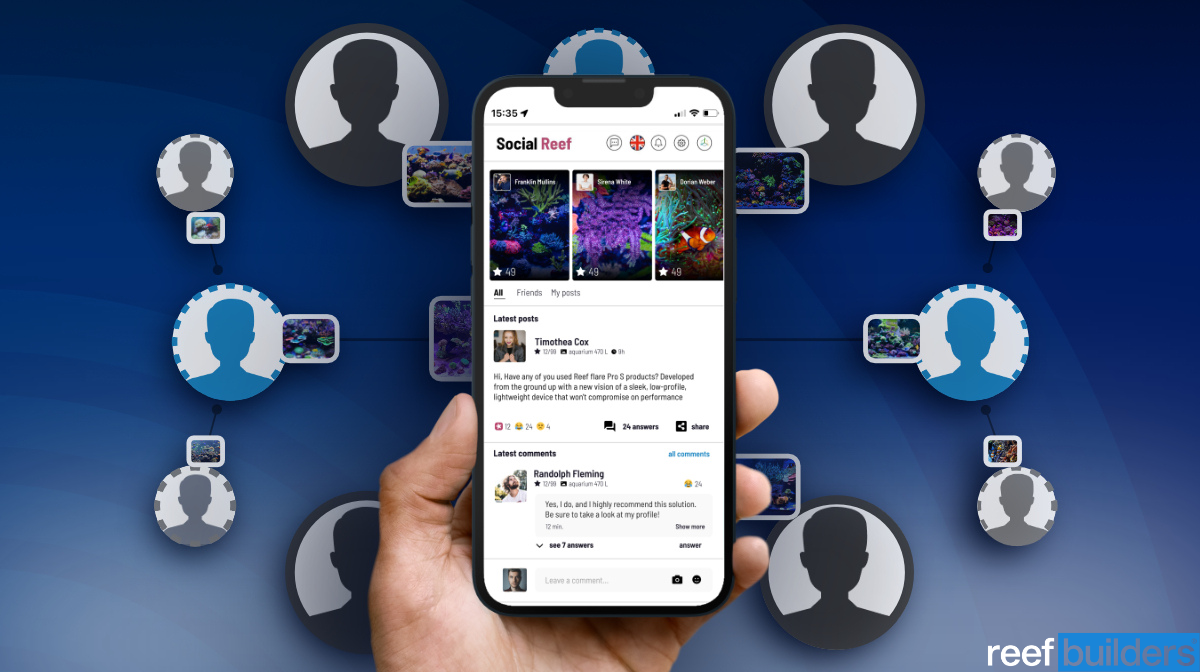Reef Factory is finishing the software on a new project which it says will connect Reef Factory users to each other using IoT technology. Called Social Reef, the new software aims to connect social media software with the all-encompassing Smart Reef app, allowing users to post photos and information about their tanks, contact each other, but importantly, check in on each other’s aquariums, share data, and settings.
“It’s a totally different category joining social software and the data from the smart devices,” the co-founder of Reef factory told Reef Builders. “It’s new not only in the reef keeping hobby but generally in all industries. From the marine hobbyist perspective people can contact each other, and can post any information or photos on the wall, but thanks to the smart technology in the aquarium profiles, on the Social Reef you can check your colleague’s aquarium too.”
“In practice if somebody posts something (like a photo from an aquarium or just a question asking for help,) you will be able to check that person’s aquarium. In the aquarium section you can see aquarium photos, the animals, ICP and parameters, their dosing schedule and information from the smart devices. Data will be live and will come from devices and from the Smart Reef application. It will even feature a news portal to follow Reef Builders.”

Digital potential
Being able to login to a friend or newbie’s Smart Reef app will have many advantages, even right down to helping them set up the app itself and connect pieces of equipment. It may also aid retailers and installers to steer their client’s aquariums without being present, and even correct regimes such as dosing schedules if they’re not there.
At the other end, users may see an awesome tank “powered by Reef Factory,” and then be able to share way more settings than just light with the owner, like the elements they dose, how often, and how much. The Internet of Things is spreading through all our digital lives, and now it seems, our aquariums too.



